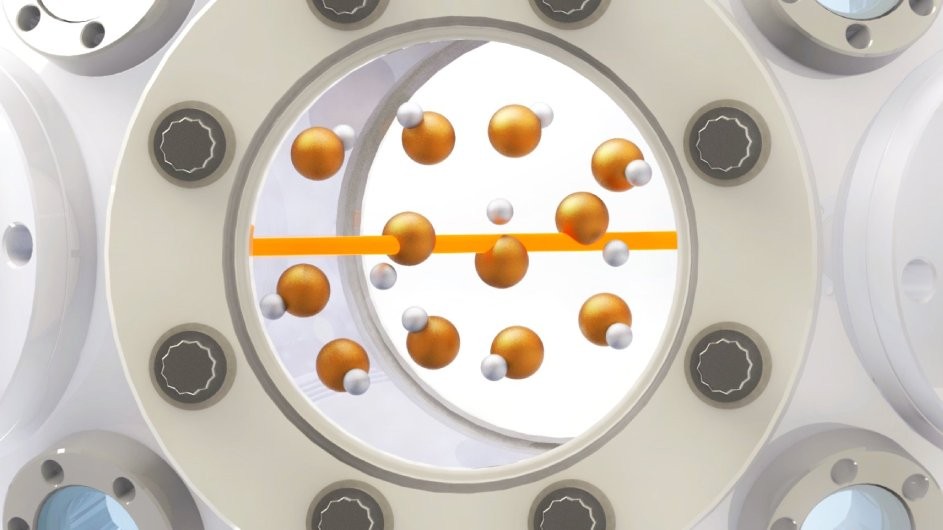Despite its natural abundance, hydrogen is challenging to isolate on its own. So researchers like Sun and others in the ZLab, as Zelevinsky’s group is known, are first working to trap a molecule that contains hydrogen using direct laser trapping and cooling techniques. These techniques are like throwing ping pong balls against an incoming basketball, said Sun: Blast enough ping pong balls, which correspond to photons of light from a laser, against the basketball, which corresponds to a molecule, and, eventually, the basketball will stop moving. “Once the molecule is trapped with optical force, it may be possible to split it apart to create an ultracold cloud of hydrogen” said Sun.
CaH is a relatively light molecule compared to other hydrogen-containing molecules the ZLab considered, so it should be relatively easy to cool down; however, it has a tendency to predissociate and disappear. In the new work, the team combined experimental techniques with quantum chemistry calculations to establish the probability of disintegration for CaH’s two excited states, which reach as low as 0.1%. With this information, they created a laser-cooling scheme for CaH and proposed a pathway for the controlled splitting of the molecule into its two atomic pieces. They hope to have trapped molecules next year.
Read More: Qi Sun et al. Probing the limits of optical cycling in a predissociative diatomic molecule. Physical Review Research 2023. DOI: 10.1103/PhysRevResearch.5.043070

